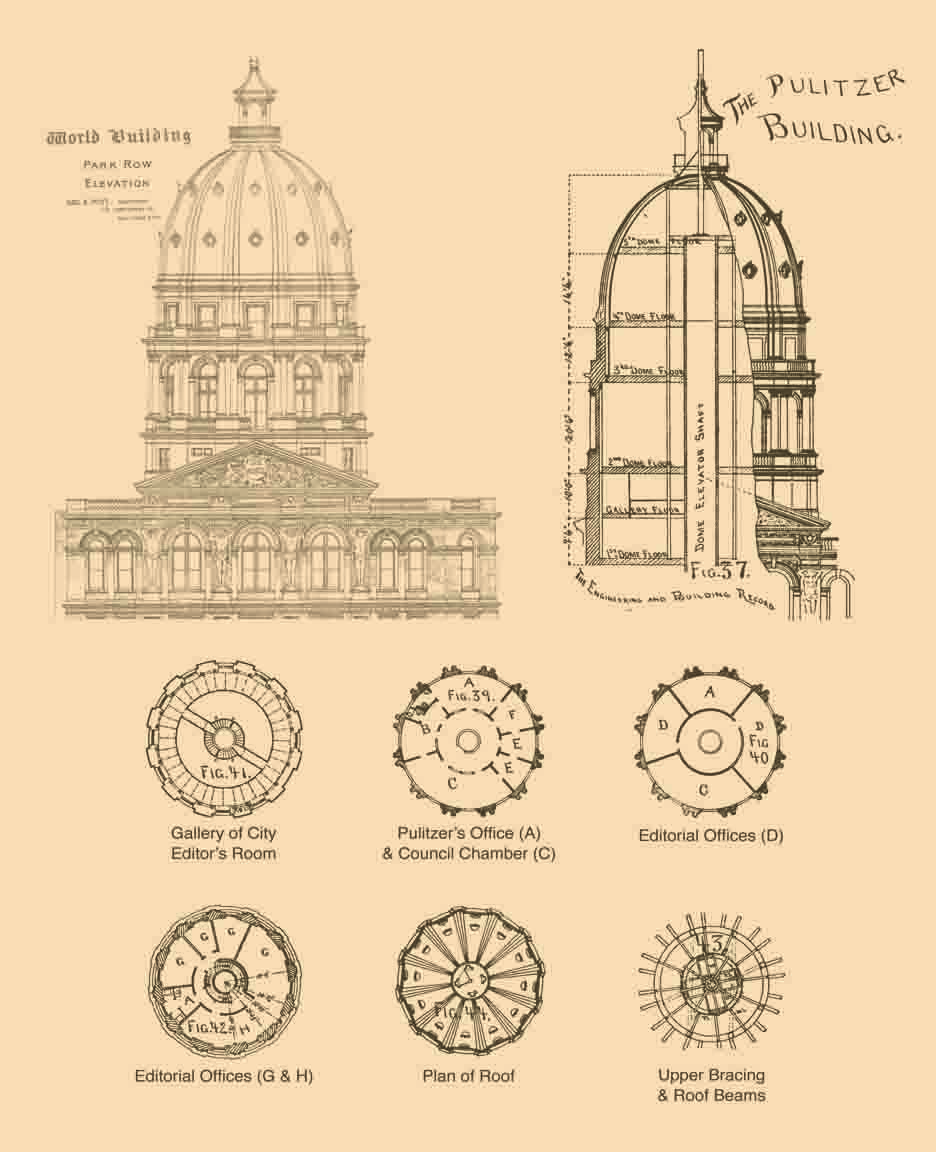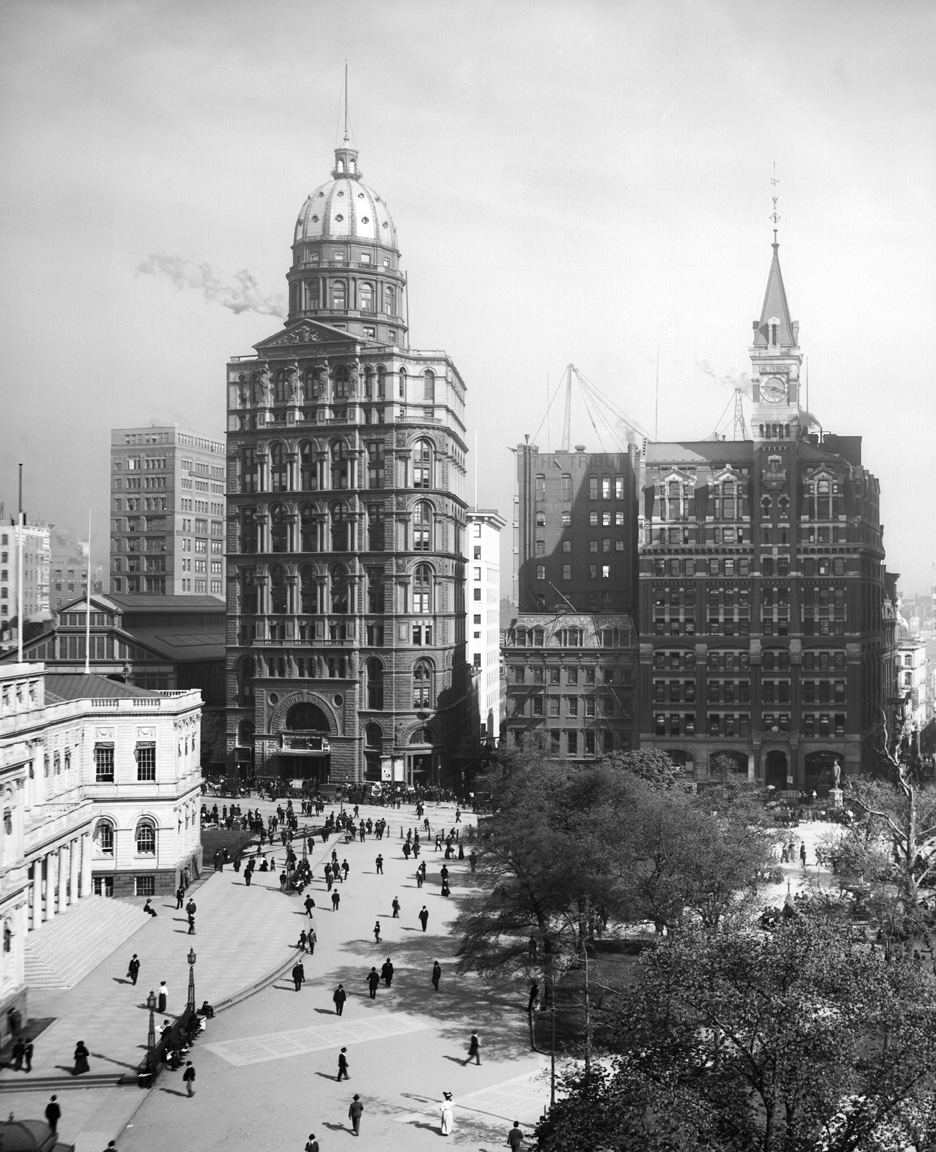The Skyscraper Museum is devoted to the study of high-rise building, past, present, and future. The Museum explores tall buildings as objects of design, products of technology, sites of construction, investments in real estate, and places of work and residence. This site will look better in a browser that supports web standards, but it is accessible to any browser or Internet device.
Completed in December 1890 as the newspaper's headquarters, the World Building - officially called the Pulitzer Building expressed the ambitions and business genius of its publisher Joseph Pulitzer. At a height of 309 feet to the top of the dome, the paper's new home on Park Row became the highest building in the city and the tallest office building in the world. (The Eiffel Tower still held the title as world's tallest structure). Designed by architect George B. Post, the building comprised 18 stories - with 12 floors of rentable office space and four levels for the newspaper's editorial offices in the drum and dome.
No expense was spared on the elaborate façade of red sandstone and terra cotta, Renaissance ornament, and figurative sculpture, which gave the appearance of an Old World masonry structure, while hiding the advanced metal-cage construction that Post encased within the walls.
The distinctive dome provided a visual identity for the newspaper. The image of the gilded top was used in advertising, graced covers of The World Almanac, and created a landmark on the skyline. At night, the top was illuminated with electric lights and the lantern at the top of the observation platform acted as a beacon for ships at sea.
In a booklet printed for the tower's debut, the paper effused:
From Jersey's shores, from Brooklyn Heights, from the beach of Staten Island, from points far remote, it is first discerned as one approaches New York looming above the busy metropolis, above Trinity's lofty spire, above the tall towers and high roofs of its neighbors-a giant among the giants.
WORLD DOME

Drawings by George B. Post, reproduced from the World Papers, Columbia University, Rare Book & Manuscript Library, Gift of Joseph Pulitzer, Jr..
The gilded dome of the World Building was a symbol both of Pulitzer's success and a workplace for his staff. Daily editorial meetings took place in offices in the lantern and dome; the five levels housed editors, reporters, telegraphers, and copyreaders, in total about a hundred. On the second level was Pulitzer's private office, a council chamber, and the offices of other editors. Other departments occupied the sunlit upper floors of the main block, with reporters writing stories and linotype operators and compositors preparing galleys and headlines on floors 10 through 12. The roof top level provided space for the graphic artists, the photographers' room, the photoengraving department, proof press, managing editor's room, and the Sunday room.
Access to the public observatory at the top of the dome was reachable by a cylindrical elevator cab direct from the lobby. There, visitors could enjoy the unparalleled views afforded by the building's superlative height. For an admission fee of five cents, tourists rode an express elevator that shot from the lobby to the upper floors, where they could access the cupola of the dome by a staircase. An article in The
World from 1897 captured one visitor's encounter with the elevated view:
The
long
drawn-out
mighty
city
was
dipped
in
sunshine,
a
dark
blue
sky
was
above
me,
and
in
a
picturesque
manner
the
white
buildings
appeared
to
be
embossed
upon
the
scene--so
different
from
the
red
brick.
It
was
not
only
roofs
that
one
was
looking
at;
one
could
see
the
entire
buildings
in
their
grandeur,
as
they
border
upon
wide
streets--and
then
again
the
difference
in
lights;
here
a
three-story,
there
a
five,
another
a
twelve,
and
even
eighteen
and
twenty-story
houses.

